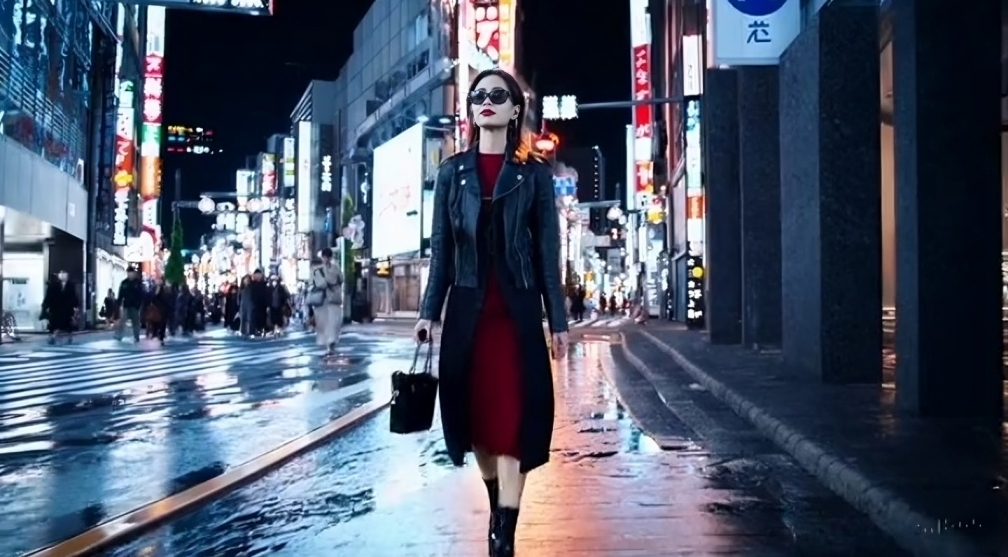OpenAI’s Sora, Generate videos Photo-realistically. All with text.
 Parth P Shah
Parth P ShahIf you've not been listening up in the tech space lately, there's been some insane developments. The development of a new Model that can create minute long videos just with simple sentences.
What's Sora AI?
Sora is a cutting-edge text-to-video model developed by OpenAI, the groundbreaking research laboratory behind projects like ChatGPT and Dall-E 2.
What sets Sora apart is its ability to generate realistic and imaginative videos solely from written descriptions.
It can generate videos up to a minute long, featuring highly detailed scenes, complex camera motion, and multiple characters with vibrant emotions. Sora works by taking a short descriptive prompt from the user, such as “A stylish woman walks down a Tokyo street filled with warm glowing neon and animated city signage.” It then interprets the prompt and simulates the physical world in motion, using a large corpus of videos that it has learned from. Sora can also create videos based on a still image or extend existing footage with new material. It can render video games and simulate digital worlds, including physics, while simultaneously controlling the player.

How does it work?
Sora is an innovative diffusion model designed to enhance video quality by starting with noisy input and progressively removing the noise through a series of steps. This approach ensures that even if a subject momentarily disappears from view, the model maintains consistency, providing smoother transitions and more coherent output.
Similar to the architecture of GPT models, Sora utilizes a transformer framework to represent images and videos as patches, allowing it to handle diverse data sets with varying durations, resolutions, and aspect ratios. This flexibility enables Sora to effectively learn from a wide range of video content, improving its ability to generate high-quality outputs.
Additionally, Sora incorporates re-captioning techniques inspired by DALL-E3, a model developed by OpenAI for generating images from textual descriptions. By leveraging these techniques, Sora closely follows user instructions provided in text format, ensuring that the generated videos align with the user's preferences and intentions.
When generating videos, Sora analyzes text prompts to identify key elements such as subjects, actions, locations, times, and moods. It then searches its extensive database of videos to select clips that match these criteria, seamlessly blending them together to create new compositions that reflect the user's desired content.
Moreover, Sora offers advanced style transfer capabilities, allowing users to customize the visual aesthetics of their generated videos. This includes options to emulate cinematic ambiance, apply 35mm film aesthetics, or enhance colors to create vibrant palettes. Sora adjusts lighting, color schemes, and camera angles according to user preferences, resulting in visually stunning and immersive video outputs.
In terms of technical specifications, Sora supports high-resolution video outputs up to 1920x1080 and 1080x1920, catering to a wide range of display devices and platforms. Additionally, it can animate static images by adding dynamic elements such as animals, foliage, or human activity, and seamlessly extend existing video footage by incorporating supplementary content like traffic, buildings, or landscapes.
Overall, Sora represents a significant advancement in AI-driven video synthesis, offering a powerful combination of cutting-edge machine learning techniques and user-friendly customization options. By empowering creators to generate captivating visual content with ease, Sora opens up new possibilities for storytelling, entertainment, and creative expression.
Key Features of SORA
Accurate Interpretation: SORA deeply understands the language input, ensuring that the generated videos faithfully represent the user's intentions.
High-Quality Output: The videos produced by SORA maintain visual quality and adhere closely to the user's prompt, creating compelling and immersive experiences.
Versatile Capabilities: SORA can generate videos from scratch based on text prompts, animate still images, extend existing videos, and even fill in missing frames.
Real-World Simulation: By simulating complex scenes and physical interactions, SORA lays the groundwork for future AI systems to understand and interact with the real world more effectively.
Limitations of Sora
OpenAI acknowledged that the current model has known weaknesses, including:
Struggling to accurately simulate complex space
Understand some instances of cause and effect
Confuse spatial details of a prompt
Precise descriptions of events over time
How to use OpenAI's Sora
While Sora is still being tested by a select group of developers, we can expect a similar process once it’s widely available.
Accessing Sora will likely be through a web interface or an API that developers can use in their own applications. The core of using Sora will revolve around providing clear text prompts.
We could describe the video in as much detail as possible, focusing on the setting, actions, including colors and the overall style. Once we submit our prompt, Sora will start generating our video, using its knowledge of visual concepts.
We'll be able to review your video and make adjustments to our text prompt if needed until we achieve our desired result.
So if you are wondering how to use OpenAI Sora AI, there is currently no way to do so if you aren’t selected by OpenAI for its testing phase.
Before it's Release...
OpenAI said in its blog post that it would be taking several important safety steps before releasing Sora to the general public.
“We are working with red teamers – domain experts in areas like misinformation, hateful content, and bias - who will be adversarially testing the model. We’re also building tools to help detect misleading content such as a detection classifier that can tell when a video was generated by Sora.” the company said.
It is also granting access to a number of visual artists, designers and filmmakers to collect feedback on how creative professionals could use it.
OpenAI also acknowledged that Sora has weaknesses, including difficulty with continuity and distinguishing left from right.
“For example, a person might take a bite out of a cookie, but afterward, the cookie may not have a bite mark.” the San Francisco-based startup said.
OpenAI rivals Meta and Google have also demonstrated text-to-video AI technology, but their models have not produced results as realistic as Sora’s.
Learn More: https://openai.com/sora
Subscribe to my newsletter
Read articles from Parth P Shah directly inside your inbox. Subscribe to the newsletter, and don't miss out.
Written by

Parth P Shah
Parth P Shah
All things tech! Follow me and my journey in teaching myself and you about some new things in tech, one at a time! ⚡️ 👨💻